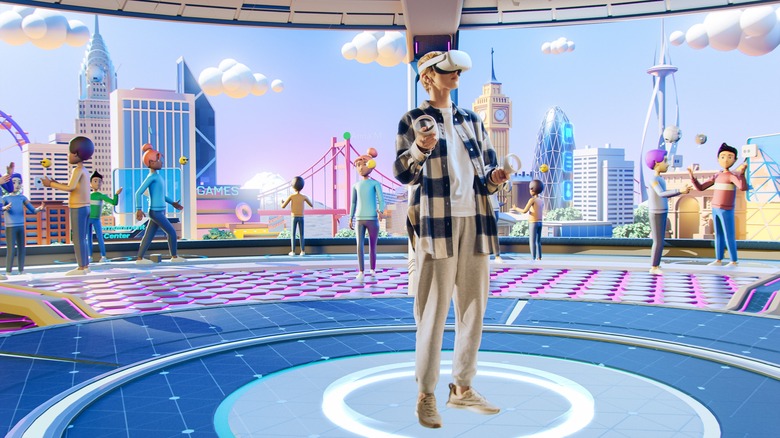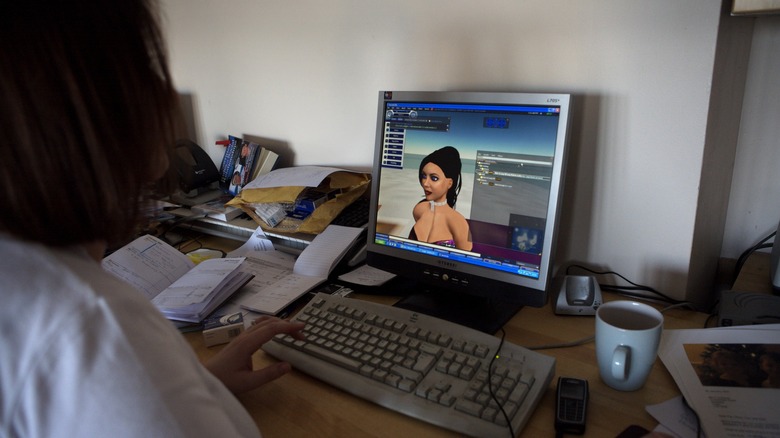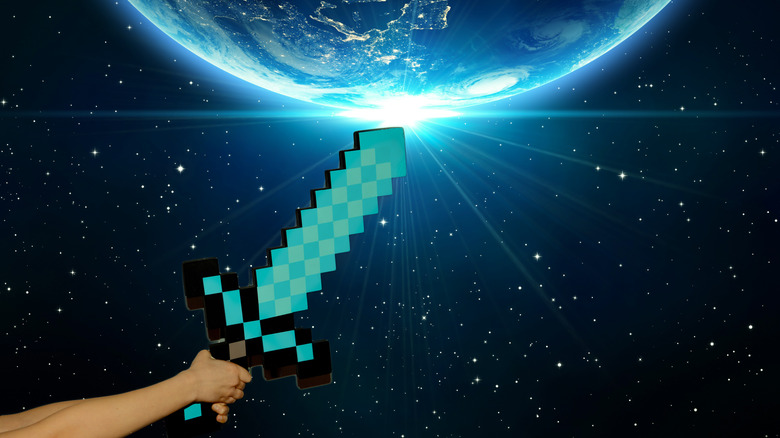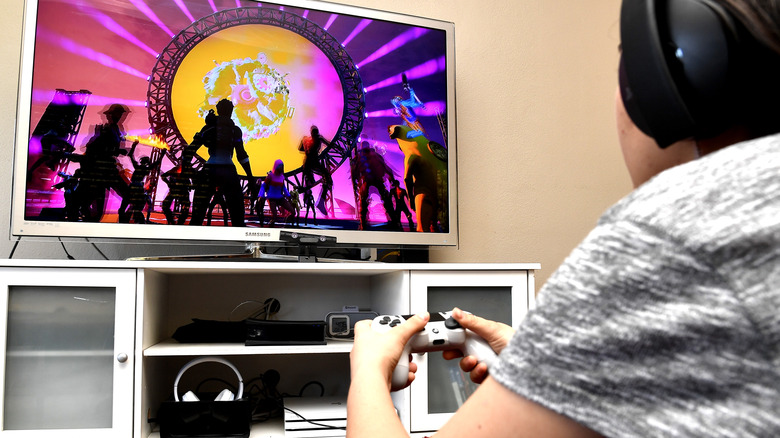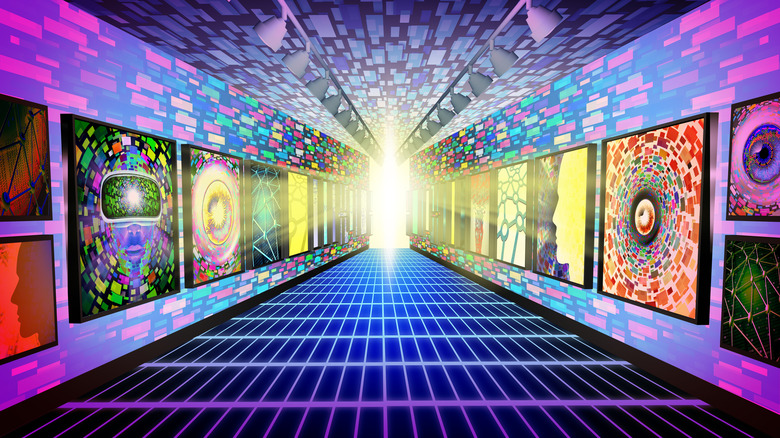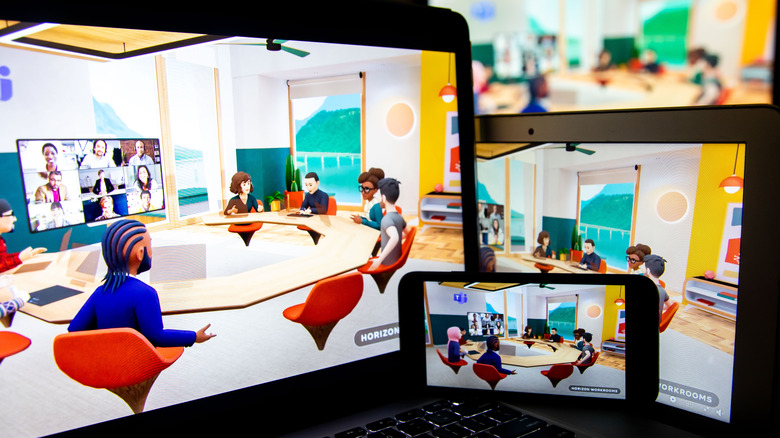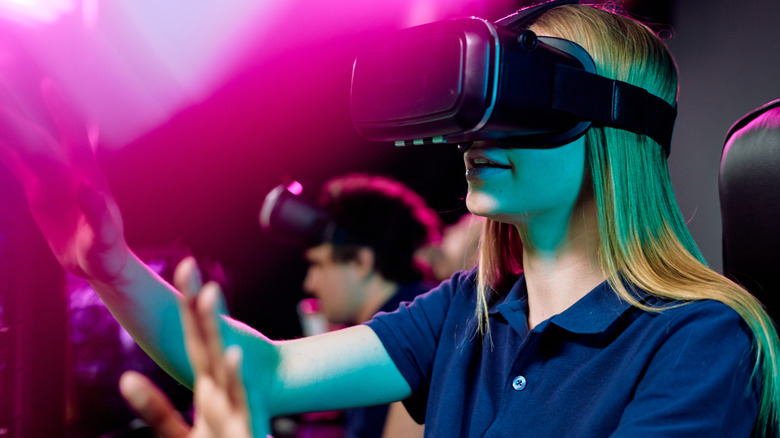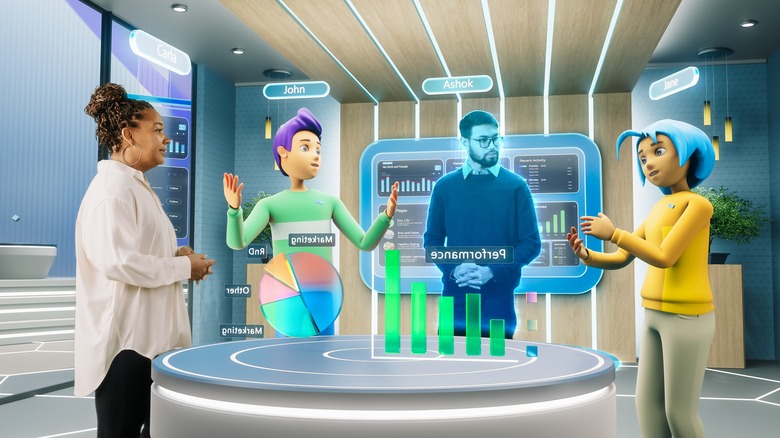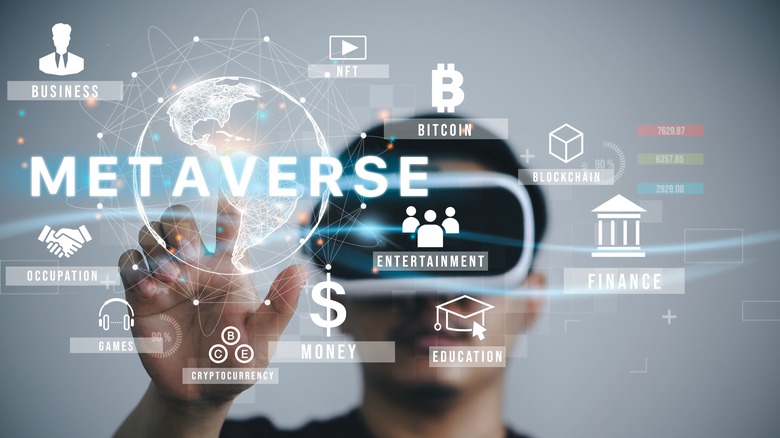What Is The Metaverse And How Does It Work?
Wondering what the Metaverse is? Chances are you've already been there. There is no one perfect description for the concept, but in general, we're talking about digital interaction and human decision-making in a few key ways. The term "Metaverse" comes from the Neal Stephenson science fiction novel Snow Crash, released in 1992 – but it's come to mean so much more since then.
Today, the Metaverse is a virtual or augmented reality world where users can come together and perform tasks together or hang out using 3D avatars, holograms, or something in between, depending on whose version of the metaverse you're playing in. The Metaverse can also be a personal virtual domain where you can escape into a virtual world you created. People in the Metaverse can own virtual homes where they have virtual possessions including art, furniture, and all the accouterments of "real-world" life but in a virtual form.
The Metaverse is Second Life
There were games before it that were similar, but the release of Second Life really struck a chord with pop culture in a way that still rings true today. As Dwight said in The Office, "Second Life is not a game. It is a multiuser virtual environment. It doesn't have points or scores, it doesn't have winners or losers."
Dwight does a decent job of explaining Second Life as it represents a very rudimentary doorway into the metaverse. Incidentally, the second bit about how he plays Second Life is important in explaining the difference between classic games and the metaverse.
Dwight says he created a version of himself in Second Life that was exactly the same as he was in his real life, except he could fly. The metaverse can be as simple as that, it doesn't need to be anything as wild and crazy as we see in Ready Player One.
The Metaverse vs the internet, what's the difference?
During his presentation at Connect 2021, Zuckerberg outlined the Metaverse as "the next chapter of the internet." He likened it to the creation of Facebook and other social networks years ago, and promised it will be a way to "feel present with the people you care about," and "teleport anywhere." Instead of going online for work, shopping, socialization, and entertainment — people will be using the Metaverse if the Facebook founder's vision becomes reality. Access to the Metaverse will be done through a VR or AR headset, not through a laptop. Meta is hoping people eventually see their headsets as essential pieces of household tech, much like a PC, smartphone, or tablet is seen now.
However, the chances are the internet isn't going anywhere. There are going to be large numbers of people who refuse to get involved with the Metaverse, and instead opt to get online in the "normal" way. Just like how we all have relatives that don't like using the internet and prefer to use things like the television and telephone to meet their communication needs instead. The traditional internet also has its own future to look forward to. Web3, a decentralized internet with higher security, is already cropping up in a number of places. Web3 is more than likely the next step for the traditional internet, but a lot of the work being done is behind the scenes. On the face of it, users may not notice much of a difference — and that's probably for the best. There is room for both the Metaverse and the standard internet, but the traditional web is far less likely to flop in the coming years.
The Metaverse is Ready Player One
The story and movie Ready Player One present a future in which the idea of the metaverse has become so pervasive that people care more about their life in the machine more than they do in real life. In what the book and movie called The Oasis, we see a hosted metaverse with an idyllic (and potentially impossible) sense of freedom and openness.
At the same time, this representation of the metaverse suggests there'll be one all-encompassing, all-accessible piece of software that'll host everything and anything. Aside from the reality in which we live today, we're crossing our fingers and praying that no other singular universe like this dominates our digital world in the future. The implications would be nightmarish.
But the suit that lets you feel things in the Metaverse would be pretty cool, while at the same time, just a little creepy.
The Metaverse is Minecraft and Roblox
The first time you play Minecraft, you realize you've entered a new realm of "gameplay." You're represented by an avatar that has the ability to dig holes, harvest materials, build things, and live a life as you see fit. You can also play games and go fishing.
In Minecraft, creativity comes from a careful balance of limitations and functionality. You control blocks, and you get a sense of accomplishment from achieving goals within an environment that has a clear set of rules. Minecraft was created as a game, and became a platform once its potential was revealed.
Roblox was built as a platform, and is a game platform for creators from the get-go. Roblox was created as a place where content would be generated by users with very few restrictions.
Despite what the very fantastical trailer above shows, the Roblox platform is not as immediately aesthetically pleasing as Minecraft. Because of the relative lack of curation done by those in charge of Roblox, it is not difficult to find glitches and games that are effectively non-functional.
The important bits of both Roblox and Minecraft are in creative potential. Both titles are immersive, and both allow you to create and modify the environment in which you exist.
The Metaverse is not new
The basic building blocks of the metaverse have been around since the early days of the internet. As soon as we started giving ourselves personalized usernames, using fun icons, and building our own webpages – we've been in the metaverse for a while, really.
It's just now that we're getting to a point where describing these creative environments has become necessary. We've entered a point at which an all-digital environment can host more than just a game – it can be the place where we do work, socialize, and effectively live an entire second life.
One of the most important distinctions is the open-world concept of the Metaverse. You can go anywhere and do anything the platform allows. You don't have to follow a path laid out for you by a game. You can meet other real people who co-habit the same metaverse. Think of Fortnite or World of Warcraft.
The Metaverse is Mixed Reality
As Niantic describes the Real-World Metaverse, we see the phase we're entering now. Games like Pokemon GO demonstrate how our virtual and real worlds can come together in a single experience. When you acquire an egg in Pokemon Go, you have to walk a distance in the real world in order to hatch it. But the metaverse takes things to a whole new level.
Non-fungible Tokens (NFT) represent one way in which digital goods can be seen as "real" as physical goods. An experience like Pokemon GO shows us how attaching digital goods to our real world can make a platform feel like more than a game.
The potential for the metaverse is massive. Metaverse apps will generate billions in consumer spending from this point forward. Companies that successfully accept and secure their place in this creative digital landscape will find monstrous room for growth.
Making money in the Metaverse
Part of the reason Mark Zuckerberg is going all in on the Metaverse is the staggering amount of money that could be made there. Everyone in the Metaverse may have a virtual home or two, those properties will be filled with virtual furniture, clothing, and decorations. A good chunk of that will cost money. Beyond the objects in your home, the demonstration Meta prepared also showed people walking down the street, seeing AR art, and choosing to tip the artist. Without looking at actual "work" in the Metaverse, the platform could see billions of transactions every day if it ever gets as popular as Zuckerberg believes it will. If Meta took even a small percentage of the money that would change hands, Zuckerberg's gamble will have paid off big time.
While handing out actual, physical, money for a virtual couch or rug may seem ridiculous to some, it does have a basis in reality. Kids were paying actual cash for virtual furniture at "Habbo Hotel” nearly 20 years ago. The modern equivalent would be "CS:GO" or "Fortnite" skins, which offer no gameplay benefit but act as a status symbol. The rise of NFTs could also be seen as a testing bed for virtual possessions. There are already NFT "galleries" in the Metaverse you can browse and purchase art from. One is even owned by famous art auctioneer Sotheby's (via NFT Evening). As far as property goes, some people are already spending enough to buy an actual, physical, house on some of the more desirable plots of virtual land. The four biggest property platforms raked in over half a billion dollars in sales last year.
VR & AR both play a part in the Metaverse
The Metaverse, as Zuckerberg pitched it, may become a part of everyday life through both virtual and augmented reality. Both VR and AR require a headset, but how they play out is somewhat different. VR creates an entire virtual world for you to inhabit, with the floors, walls, buildings, and people all being generated in the headset. It can transport you to a different universe. You're not in your living room anymore — you're in a "Star Wars" inspired space freighter, or looking out across a vast mountain range. That mountain range may actually be real; not all VR experiences are computer generated. Some are 180 or 360-degree experiences recorded on something like Mount Everest or the International Space Station. But you're still not there, it's still your living room once the headset comes off.
AR is different, it still requires a headset, but that headset enhances the environment around you. This could be by making art come alive, plopping down a model cityscape in your living room, or allowing you to play a detailed, animated, version of your favorite tabletop game. AR doesn't require a headset either, apps like "Pokémon Go" use AR to make it seem like Pokémon are in the room with you or on the street. Though a headset will likely provide a better experience. No matter what happens with VR, AR is still likely to become a larger part of everyday life as time goes on. Think of your sunglasses giving you directions as you wander through a strange city, or displaying alerts from your phone. AR will likely become more of a focus when Apple releases its long-awaited headset at some point in the future.
Working in the metaverse/going to virtual meetings
A large part of Meta's focus, and its recent high-end headset, centered around the concept of working in the Metaverse. Rather than go to a physical office, people can work, meet up, and spitball ideas from anywhere in the world because of the Metaverse. You can also virtually create things like a large, multi-monitor setup in some programs. Draw on virtual whiteboards. Create virtual 3D products and shapes together. The possibilities are seemingly endless, but there is a catch.
Metaverse-based work is currently awful most of the time, and Meta's own program, Horizon Workrooms, isn't even the best program to work in. Earlier this year it emerged that even Meta's own employees were avoiding working in the Metaverse. When the company started mandating virtual meetings, some employees had to dust off headsets that were sitting unused for months while others had to rush out and buy one. It's also possible to join a Metaverse meeting without a headset, but then it basically becomes a Zoom call. This could all get better, and the core of a workable system is there. But the whole thing lacks a lot of polish and we're still pretty far from a comfortable, virtual, working experience. Ironing out the bugs that interrupt your workflow may make things better, but there's still the issue of wearing a less-than-comfortable headset for several hours. Meta is intent on making working in the Metaverse a viable option and is neglecting profitable markets like gaming as a result of this focus. While it may arguably be doing more harm than good, you could also say that it's a core part of Meta's vision and the Metaverse won't happen without it.
You can attend virtual experiences like concerts and sporting events
Concerts are fun but expensive. A ticket can cost hundreds of dollars, then there's travel and possibly a hotel stay to consider. Even if you have the money, there are only so many spots in each venue — so there's no guarantee you'll get a ticket. However, if the Metaverse takes off you may one day be able to put a headset on and virtually attend a concert anywhere in the world.
You can already do this to some degree, but like many things, it needs a lot of refinement before it's the futuristic experience we've been promised. Meta currently hosts regular events, which include high-profile concerts along with things like NBA games. The issue is, you're not sitting in a virtual seat or standing in a virtual crowd watching it all play out in 3D. You're on a balcony, watching the event on a huge cinema screen. Sort of cool in its own way, but not what we all wanted. There are VR experiences that make you feel like you're actually there watching something, and there is probably a way to couple that with live events and a virtual crowd. There are also virtual gatherings and entertainment venues like comedy clubs in third-party apps like VR Chat, which show that the concept does work. So this is one of the more plausible promises Meta has made, and something to keep a close eye on. As things stand though, it's still another one for the future as what Meta is currently delivering is a long way from what they've promised.
Will holograms play a part in the metaverse
If Meta follows up on one of the patents it filed in 2020, we could theoretically see holograms used for meetings and video calls at some point in the future. According to The Next Web, Facebook's parent company has filed a patent for technology that can capture and transmit 3D representations of individuals. Knowing what we know now, it's likely that these "3D representations" will be used to create the hyper-realistic avatars that Meta has teased at Connect over the last two years. But they could also be used to create holograms.
Holograms have been around for a while, with a famous semi-recent example being the surprise appearance of long-deceased rapper Tupac at Coachella in 2012. The technology used to bring Pac back actually has its roots in illusions performed by Victorian magicians over a century ago (via the Wall Street Journal). Things have advanced even further since then, and BYU researchers have recently developed holograms that can move through the air. The need for some kind of wearable technology, be it a headset or a set of AR glasses, could be enough to put some people off the Metaverse concept. Holograms may allow for a kind of headset-free AR which might be enough to broaden the concept's appeal further. As things stand, Meta doesn't seem to be contributing any resources towards holograms, but Meta isn't the only company building a "Metaverse" so it's hard to say what the next stage of the internet will actually look like in years to come.
There is no one metaverse
As an individual, it's important that you stay aware of the dangers of this new reality. As it is with any phase change in our human experience, there's room for profit and power, but there's also room for malicious actors and all manner of people with bad intent.
There'll be plenty of liars. Lying liars why lie about how their take on the metaverse is the end-all, be-all platform for said metaverse. There is no one single "metaverse", even if a company has branded their ecosystem as such.
Just as it has always been with the internet, so too is it true of the metaverse – there is on one single authority, only entities. There are plenty of entry points into the ephemeral environment that is the metaverse, and not all elements within this future are compatible. Whatever avenue you choose, and with whomever you choose to interact, be careful – and have fun!
